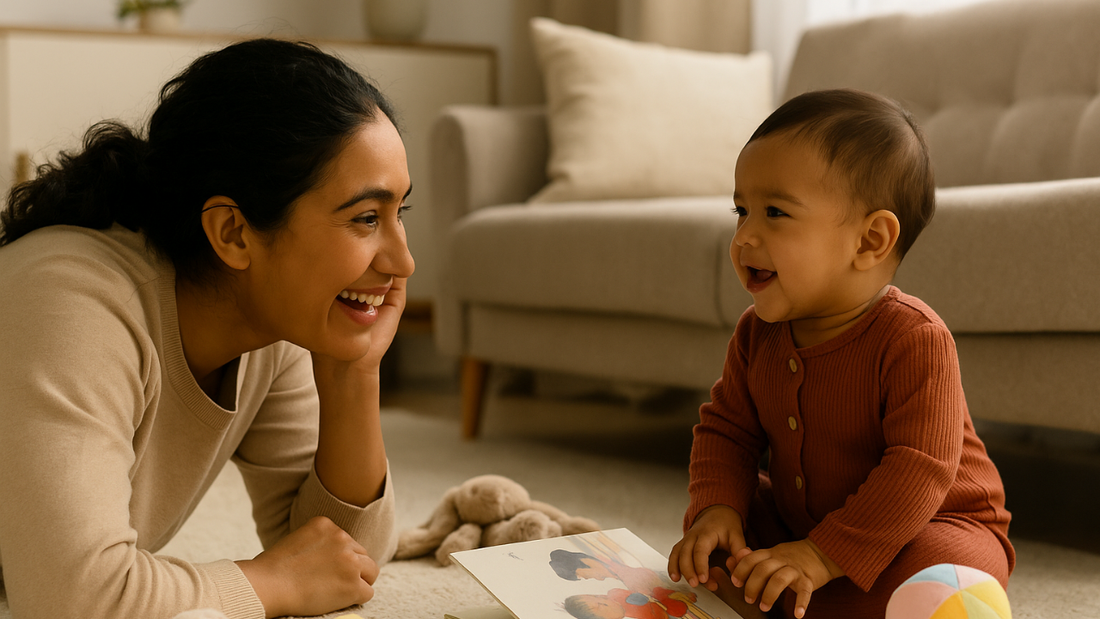
How to Boost Your Baby’s Language Through Everyday Talk
LiLLBUDFrom baby babble to first words, every “goo” and “gah” is a step toward meaningful communication. But did you know that one of the most powerful ways to support baby language development is also the simplest?
Talking to your baby—every single day—boosts their vocabulary, brain development, and confidence. And the best part? You don’t need special tools or training—just your voice, attention, and a little consistency.
Let’s explore how everyday conversations can supercharge your baby’s speech skills and how to use simple toys, routines, and playtime to turn your chatter into powerful learning.
Why Talking to Your Baby Matters
Your baby’s brain is growing at lightning speed during the first three years. In fact, by age 3, about 80% of the brain’s structure is already developed. Language exposure during this time doesn’t just teach words—it lays the groundwork for:
-
Problem-solving
-
Memory retention
-
Social and emotional skills
-
Stronger academic outcomes later on
And it starts early—long before your baby can talk back.
Just hearing your voice activates the parts of the brain responsible for speech and language. That’s why talking, singing, and responding to your baby’s sounds is one of the best things you can do for their early speech development.
Everyday Talking Tips That Boost Baby Language Development
You don’t need flashcards or a speech class. Here’s how to weave early learning into your daily life.
1. Narrate Your Day
Whether you're folding laundry or making coffee, describe what you’re doing: “I’m pouring the milk—slooowly. Now it’s in your bottle!” This builds vocabulary and helps your baby associate words with real-world actions.
2. Pause and Wait
When your baby makes a sound, pause and wait—just a few seconds. This encourages back-and-forth communication, even if they’re not saying words yet. It might look like:
Baby babbles → you respond → baby babbles again. This is the foundation of conversation!
3. Repeat and Expand
If your baby says “ba,” you might say, “Yes! That’s your ball! The ball is bouncy!” This shows your baby how sounds turn into words and ideas.
4. Sing Simple Songs
Music helps babies pick up patterns in speech. Try:
-
Nursery rhymes
-
Repetition songs (like “Row, Row, Row Your Boat”)
-
Name songs (“Ella loves apples!”)
Singing is a fun, rhythmic way to build language and boost brain development.
5. Use Real Words
Skip the baby talk gibberish and use real words, spoken clearly and warmly. You can still keep it playful—make sure it’s useful language your baby can learn from.
Best Toys That Support Baby Language Skills
Toys are more than fun—they’re conversation starters. Select educational toys for children that foster curiosity and encourage interaction.
Here are the top picks for language-building toys for 1-year-olds:
1. Montessori Toys
Open-ended toys like stacking rings, shape sorters, and nesting cups invite exploration. As your baby plays, describe what they’re doing: “You put the red ring on top! It’s big and round.”
2. Books with Real Pictures
Reading books with clear, realistic images helps your baby connect words to objects. Choose books with simple text and name what you see together.
3. Animal Figurines or Puppets
Use animals to create stories or play pretend. “The cow says moo! What does the dog say?” These offer rich opportunities for early speech activities through imaginative play.
4. Musical Toys
Instruments like shakers, bells, or mini drums not only support rhythm, but also speech patterns, listening skills, and memory.
Visit our website LiLLBUD for a wide range of such developmental toys.
Baby Milestones to Watch (Language Edition)
Here’s what baby language milestones often look like, month by month (keep in mind that every child is different!):
-
6 months: Babbles with consonants (“ba-ba,” “da-da”)
-
9 months: Understands “no,” points to objects
-
12 months: Says first words like “mama” or “ball”
-
18 months: Says 10–20 words, uses gestures
-
24 months: Combines 2–3 words (“More milk”)
-
36 months: Talks in short sentences and asks questions
Real-Life Language Builders You Already Have
You don’t need to buy fancy toys or apps. Use what you already have:
-
Mealtime: Talk about textures, flavors, and utensils
-
Bath time: Count toes, name body parts
-
Car rides: Point out colors, signs, trees
-
Playtime: Describe what they’re doing and ask questions (“Where did the block go?”)
Every moment is a learning moment—especially when it comes to language.
Your Voice Is the Best Tool
There’s no app, gadget, or toy more powerful for your baby’s language development than you. Talking to your baby throughout the day builds their brain, strengthens your bond, and turns ordinary moments into extraordinary learning.
So go ahead—chat, sing, narrate, and play. You’re not just filling the silence—you’re growing a communicator, one sweet word at a time.

